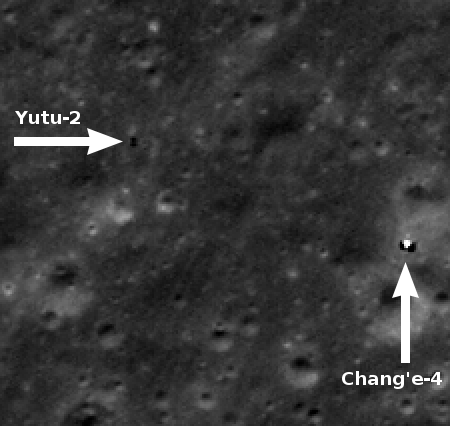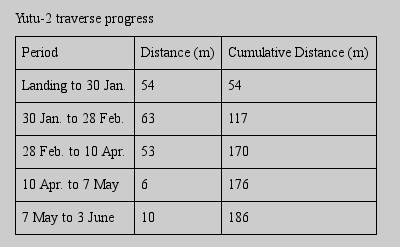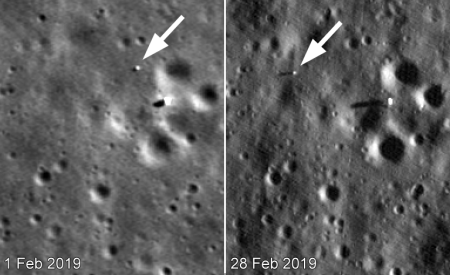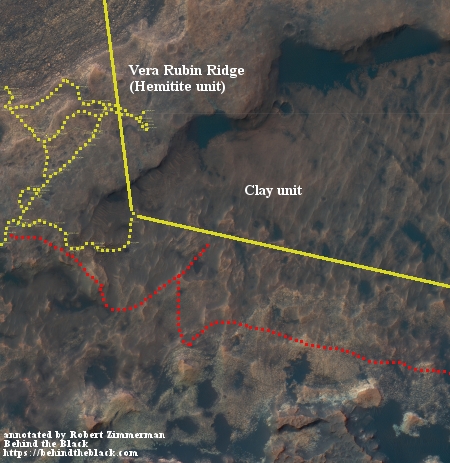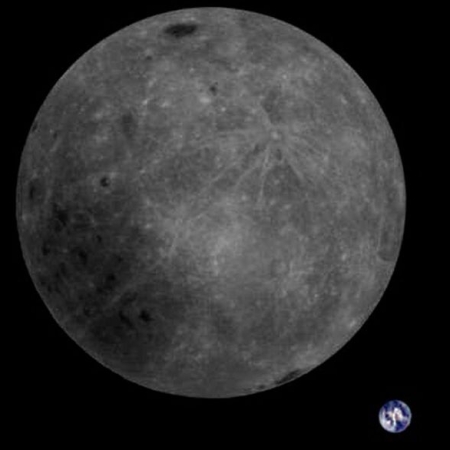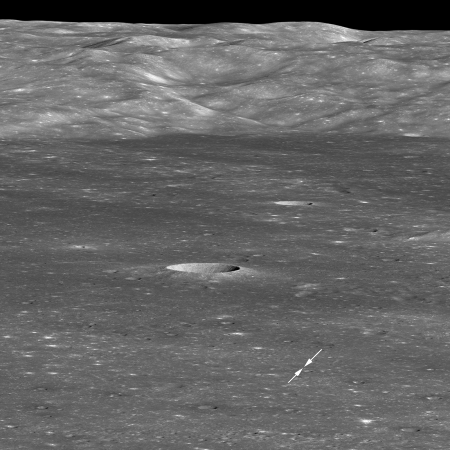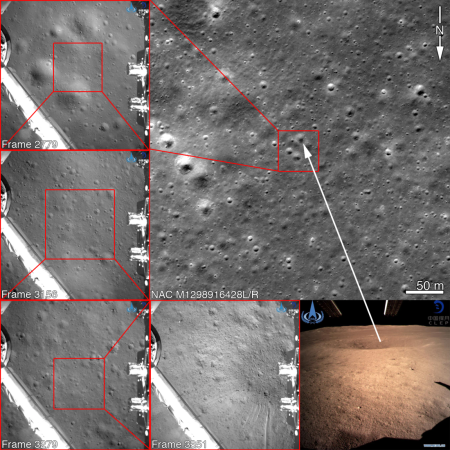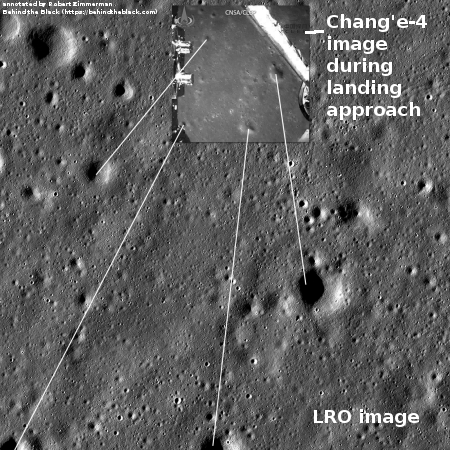Chang’e-4/Yutu-2 return to dormant mode for lunar night
According to one story in the Chinese press today, the science teams running Chang’e-4 and Yutu-2 on the far side of the Moon have now put both into dormant mode for the coming lunar night after completing their seventh lunar day.
What is intriguing about this short story is that while to lauds the work done by Chang’e-4 during that seventh lunar day, it says nothing about Yutu-2. Early comparable reports would have at least told us how far the rover moved during the lunar day. This time they say nothing at all about Yutu-2, other than it has been placed in dormant mode.
It could very well be that they had a problem with the rover. Sadly, China is not an open society. We can only wait for them to tell us.
According to one story in the Chinese press today, the science teams running Chang’e-4 and Yutu-2 on the far side of the Moon have now put both into dormant mode for the coming lunar night after completing their seventh lunar day.
What is intriguing about this short story is that while to lauds the work done by Chang’e-4 during that seventh lunar day, it says nothing about Yutu-2. Early comparable reports would have at least told us how far the rover moved during the lunar day. This time they say nothing at all about Yutu-2, other than it has been placed in dormant mode.
It could very well be that they had a problem with the rover. Sadly, China is not an open society. We can only wait for them to tell us.

